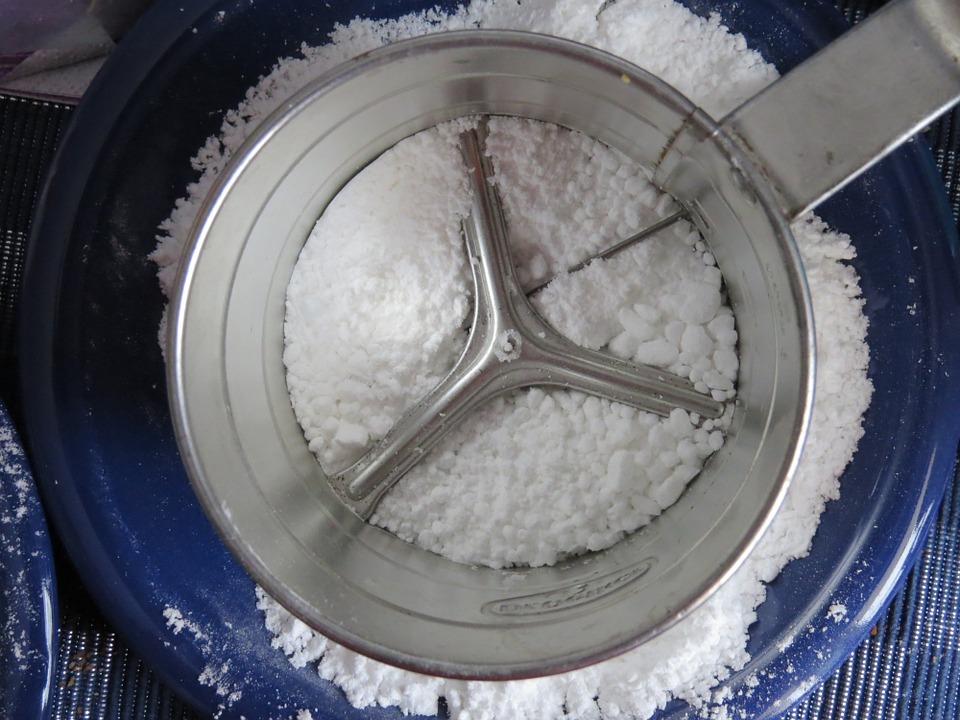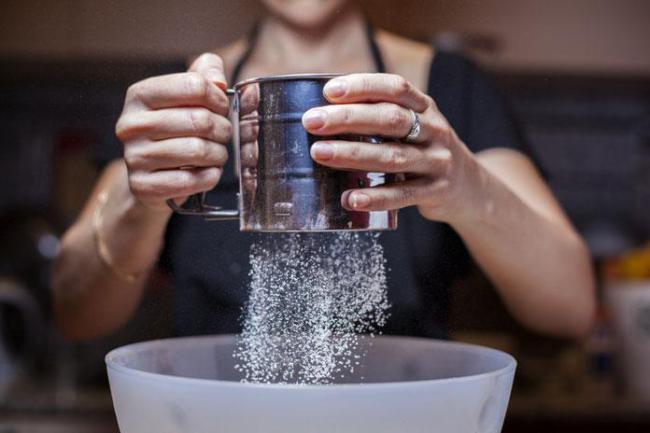A flour sifter is similar to a strainer that has a fine mesh screen housed in a container. It is used by passing flour and other dry ingredients through it to loosen the particles, incorporate air, and lighten them. Aside from that, it can also be used in combining several ingredients by passing them through at the same time. This can include sugar, fine grains, and spices.
If you’re baking or cooking and your recipe calls for pre-sifted ingredients, you can use a flour sifter to sift first then measure. If the recipe needs a certain amount of the ingredients sifted, then you need to measure it first before sifting. A sifter is a helpful kitchen tool that can make it easy for you to break up clumps and remove foreign matter, as well. It can also aerate the flour and give it more volume. A flour sifter can also help in incorporating other foods and liquids into sifted powders.
As a tool, a sifter is simple. It is commonly made up of stainless steel, aluminum, or tinned steel. At its base, you will find an agitator or a metal wheel of some sort, which is typically propelled by a trigger in the sifter’s handle. This agitator forces the flour through a screen. There are also complicated-looking ones that have three screens and two agitators. But this does the job most completely, even if it’s a bit slower to use and requires more strength. You can also shine them up with polish for steel as well.
A flour sifter is indeed one of the most useful kitchen tools when it comes to baking. However, some people find it challenging to clean. It’s because when you use a flour sifter and wash it with water, some leftover flour would turn into a glue-like texture and clog the holes of the sifter. If you are experiencing the same problem with your flour sifter, don’t throw it away yet and buy a new one. It’s because we’re here to give you the most effective way to clean a flour sifter.
How Do You Clean a Flour Sifter Effectively?
Flour sifters are handy, but they are also challenging to get clean. If traditional washing methods do not work for your flour sifter, there are a few tricks that you can try to keep your flour sifter clean. Here are some of the tips we can give you:
- One of the effective ways of cleaning your flour sifter is by shaking off the excess flour over a trash can. You can do this by holding the flour sifter in one of your hands and bang it lightly with your other hand. When all of the excess flour is gone, you can store the flour sifter in a plastic bag.
- Another way is by washing your flour sifter the best you can using dishwashing soap and water. The problem with excess flour when it gets wet is it becomes hard or sticky. Therefore, before washing, you can allow the flour sifter to sit in a dishpan that is filled with soap and water for an hour. After that, rinse the soap from the sifter then dry it the best you can by using a towel. After drying with a towel, you can place the flour sifter in your oven on low heat until it becomes completely dry. It is important to dry it up completely to prevent your flour sifter from rusting.
- You can also clean a flour sifter using your vacuum cleaner at home. Just make sure that it is free of dust. Attach the hose that has some bristles to your vacuum. Turn it on and start vacuuming all the leftover flour that is stuck out of the sifter. You can use the brush to get them off more quickly.
- If your flour sifter is stuck with leftover flour on its hard to reach spots, then you can use a toothpick or a toothbrush to get them out. Once you’ve managed to get all the stuck flour out, you can then wash the flour sifter with dishwashing soap and water, then dry it on low heat in your oven.
- A compressed air device can also help in cleaning a flour sifter. It is a device used in blowing air to clean computer keyboards and other places that are difficult to reach. Use it to spray air to your flour sifter, and it will help the stuck flour to come right off. With this, you do not have to worry about getting your flour sifter wet and having it rust.
These are some of the most effective ways to clean a flour sifter that we can recommend. If ever these tips will still not work for you, you can also try buying and using a plastic flour sifter instead. It is much easier to clean because you can place it in the dishwasher together with the rest of your dishes. But if you only use your sifter for flour, you can just shake off the excess or leftover flour and store it. Just keep in mind that you should never use a rusted flour sifter because it can get rust flakes in your food.


